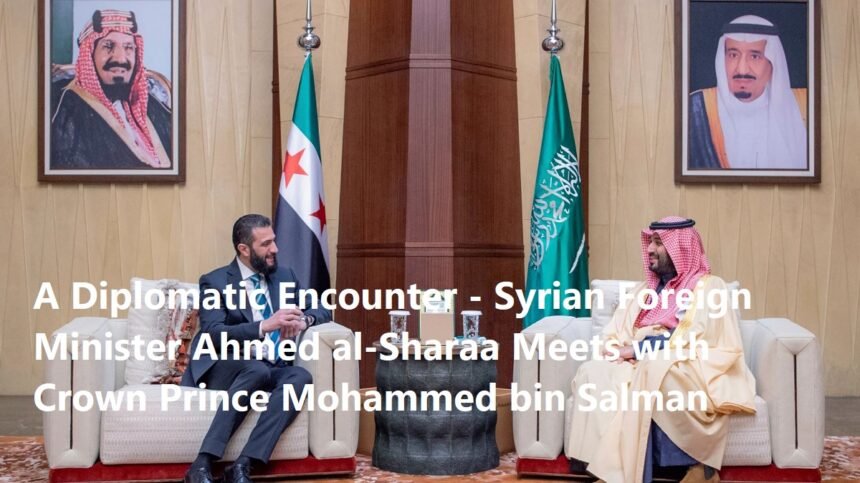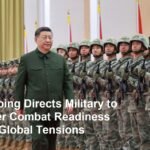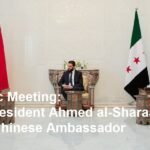In the intricate landscape of Middle Eastern diplomacy, pivotal meetings often serve as catalysts for significant geopolitical developments. One such meeting that recently captured international attention was the visit of Syrian Foreign Minister Ahmed al-Sharaa to Saudi Crown Prince Mohammed bin Salman (MBS). This engagement signifies not only the evolving dynamics between Syria and Saudi Arabia but also reflects broader shifts within the regional power structure.
The context of al-Sharaa’s visit derives from the multifaceted challenges that Syria faces in the aftermath of an extended civil conflict that has severely strained its relations with several Arab nations. Over the past decade, the Syrian government, led by President Bashar al-Assad, found itself increasingly isolated in the region, facing sanctions and diplomatic ostracism. However, shifts in priorities among Arab nations, particularly in light of the changing geopolitical landscape and the need for stability in Syria, have prompted a reassessment of relationships.
Crown Prince Mohammed bin Salman has espoused a vision for a new Middle East, characterized by economic development and political stability. His approach towards Syria is emblematic of this broader vision. The meeting with al-Sharaa marks a crucial step in revitalizing bilateral relations, presenting an opportunity for dialogue aimed at addressing mutual concerns, including security, trade, and regional cooperation.
During their discussions, the two officials are likely to have touched upon the pressing need for humanitarian aid for Syria as well as the ongoing repercussions of the civil conflict. The dire situation in Syria necessitates a concerted effort from regional powers to facilitate reconstruction efforts and alleviate the suffering of its population. The Kingdom of Saudi Arabia, with its considerable resources and influence, holds a significant position in offering assistance to Syria while also potentially leveraging its partnerships to encourage reconciliation within the broader Arab League framework.
Moreover, this encounter is indicative of a growing trend among Arab states to re-engage with Syria. In recent months, several nations have signaled their willingness to resume diplomatic ties, prioritizing stability over previous diplomatic isolation. This shift raises questions regarding the long-term implications for Syria’s political landscape and its reintegration into the Arab community.
The discussions between al-Sharaa and MBS also underscore the strategic interests of Saudi Arabia in curbing Iranian influence in Syria. As Iran has positioned itself as a key ally of President al-Assad, the KSA’s engagement with Syria could serve as a counterbalance, aimed at securing Sunni-Arab interests in the region. By fostering a relationship with Damascus, Saudi Arabia may seek to negotiate terms that limit Iranian military and political entrenchment.
Furthermore, the meeting highlights the delicate balance that leaders must maintain amid a cacophony of regional rivalries and partnerships. The outcome of such a high-profile diplomatic encounter will undoubtedly be scrutinized not only by regional actors but also by international stakeholders, including the United States and Russia, both of whom have vested interests in Syria’s future.
In conclusion, the meeting between Syrian Foreign Minister Ahmed al-Sharaa and Crown Prince Mohammed bin Salman represents a significant moment in Middle Eastern diplomacy, reflecting shifting alliances and the necessity for regional collaboration. As both parties explore avenues for enhanced relations, the implications of their dialogue extend beyond bilateral ties, influencing the broader geopolitical landscape. The international community will undoubtedly monitor these developments closely, as they carry the potential to shape the future stability of the region for years to come.












